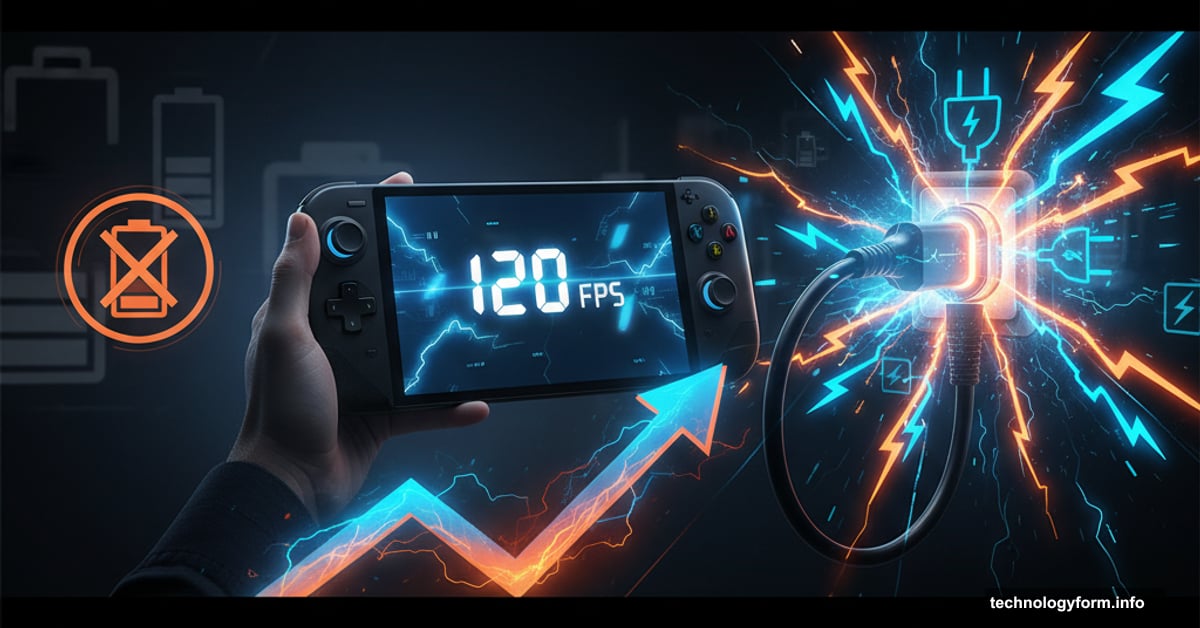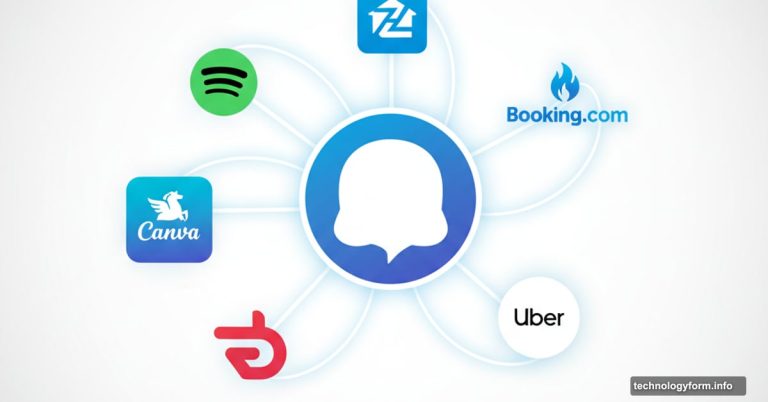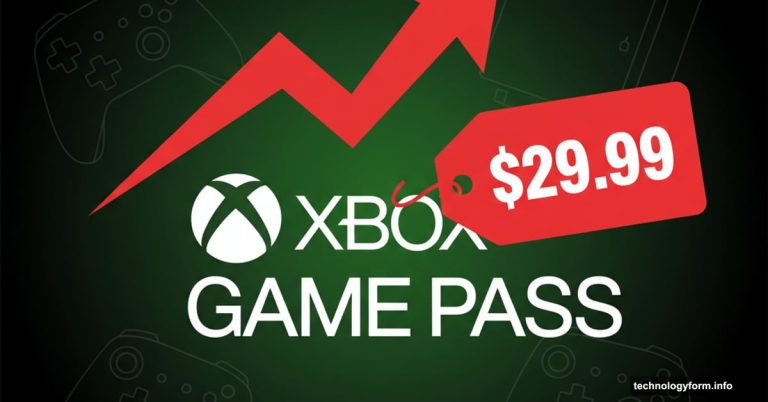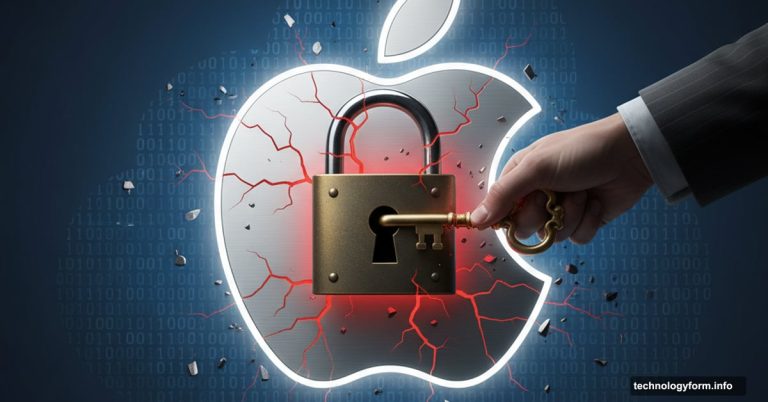GPD Win 5: This $1,600 Beast Kills Battery Life to Play Games Like a Desktop
Forget everything you know about handheld gaming. GPD just shipped the most powerful portable ever made. But there’s a catch nobody saw coming.
The GPD Win 5 doesn’t have a battery. Well, not built-in. Instead, you snap on a detachable power bank or plug straight into the wall. Sounds absurd, right? After a week testing this prototype, I’m not so sure.
This thing runs circles around every handheld on the market. Games that stutter on a Steam Deck? They fly at 1080p ultra settings here. Cyberpunk 2077 hits 71fps. Returnal cruises past 76fps. Shadow of the Tomb Raider touches 111fps.
That’s double or triple the performance of competitors. Sometimes more.
How GPD Built the Fastest Handheld Ever
AMD’s Strix Halo chip powers this monster. It’s the same processor Framework stuffed into their newest desktop. Yes, desktop. That tells you everything about where GPD’s priorities landed.
Most handhelds sip 15 to 35 watts of power. The Steam Deck maxes out at 15 watts. Beefy competitors like the MSI Claw 8 push 30 watts. The GPD Win 5? It guzzles 60 watts on battery and 80 watts when plugged in.
That’s why you need the power cord or battery backpack. Regular handheld batteries couldn’t feed this chip enough juice without melting.
Plus, GPD made a smart choice by splitting the battery from the device. Without the 80 watt-hour power bank attached, this handheld weighs just 1.25 pounds. That’s lighter than a Steam Deck. Snap on the battery and it balloons to over 2 pounds with a back-heavy feel.
The Performance Gap Is Brutal
Let’s talk numbers. Testing against the newest retail handhelds shows the GPD Win 5 crushing everything.
At 1080p ultra settings, the Win 5 delivers 71-120fps across Cyberpunk 2077, Deus Ex Mankind Divided, Returnal, and Shadow of the Tomb Raider. The Lenovo Legion Go 2 and MSI Claw 8 AI Plus? They struggle to crack 40fps in those same games.
Drop to 720p low settings and the gap widens. The Win 5 pushes 138fps in Cyberpunk while competitors hit 67-77fps. That’s nearly double the framerate.
But here’s the trade-off. Running full bore drains the battery in 45 minutes. The fans scream loud enough that public gaming becomes uncomfortable. You’re not taking this on a plane or train without annoying everyone nearby.
Pick Your Poison: Performance or Battery Life
GPD gives you granular power controls. Want six hours of battery? Dial the chip down to 6 watts. Need maximum frames? Crank it to 60 watts and accept your fate.
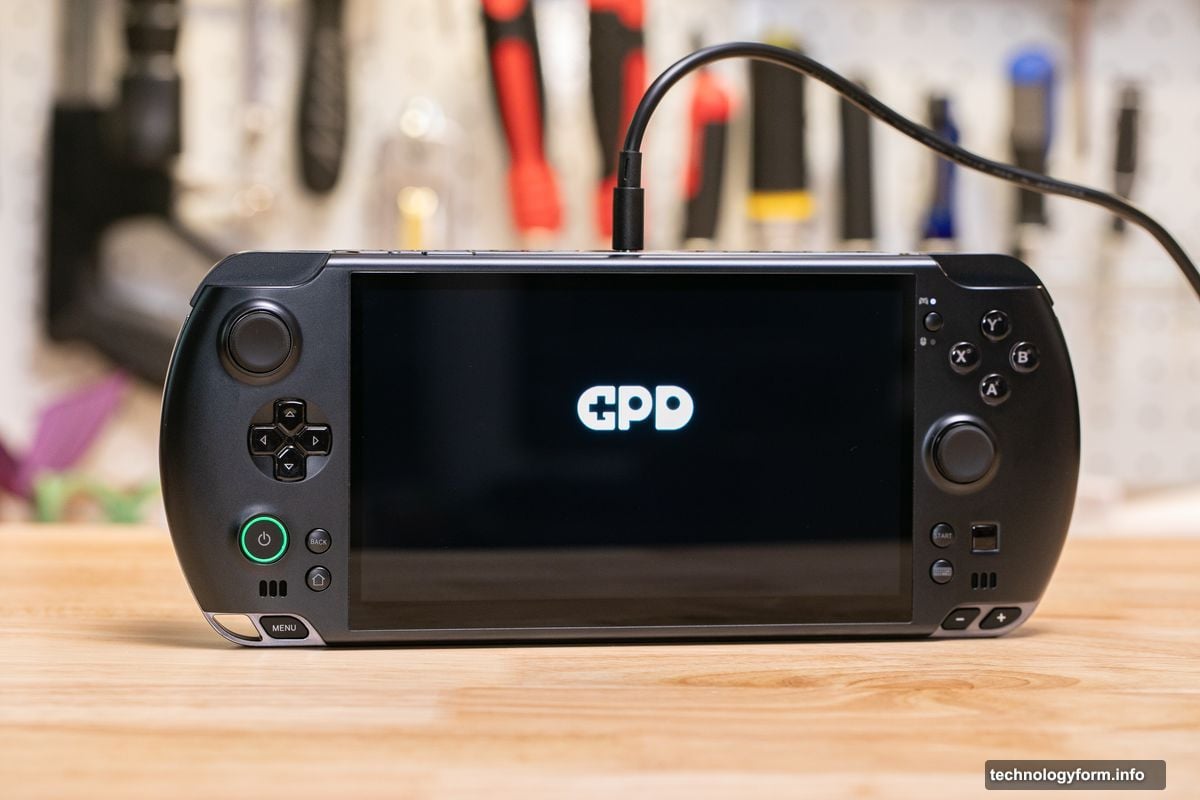
Most games demand serious power to outpace other handhelds. At 15 watts, the Win 5 matches competitors. At 25 watts, it starts pulling ahead. At 45-60 watts, nothing else comes close.
Take Cyberpunk 2077 as an example. The MSI Claw 8 delivers 60fps for three hours at 20 watts. The Win 5 hits 72fps for 2.4 hours at the same power level. Bump to 25 watts and you get 87fps for 2.1 hours.
So you’re trading battery life for performance. Always. The only way around this is plugging into AC power.
Why the Cord Actually Works
I expected to hate the power cord lifestyle. Turns out GPD thought this through.
Option one: Plug straight into the wall. Remove the battery entirely. You get a lightweight handheld with desktop-class performance. Perfect for gaming at home.
Option two: Attach the battery backpack. Unplug from the wall. Play anywhere for 45 minutes to an hour at peak performance. Or dial down power for longer sessions.
Option three: Connect the battery to the handheld with an extension cable. Stick the battery in a bag or cargo pants pocket. The cord gives you separation without weight on your hands.
That third option surprised me most. Nobody else offers that flexibility. You essentially get three devices in one: wall-powered desktop replacement, battery-powered portable, and tethered hybrid.
The Problems You Should Know About
This prototype isn’t finished. Full-system freezes happen frequently when changing TDP settings or unplugging power. The touchscreen driver bugs out. Triggers squeak. Sometimes the whole thing just locks up.
GPD is a small company that crowdfunds products and ships before fixing everything. This Win 5 launched on Indiegogo while still debugging. So expect issues if you order early.
Prices range from $1,600 to $2,200 depending on configuration. That’s absurd money for a handheld gaming device. You could build a solid desktop PC for less.
Plus, the 180-watt AC adapter is bulky. Traveling with this setup means packing the handheld, battery backpack, power brick, and cables. Not exactly streamlined.
Who Actually Needs This Thing?
Premium handhelds create a weird category. They’re too expensive for casual gamers. Too compromised for people who just want desktop performance.
But a niche exists. Gamers who split time between couch and desk. People who want one device for travel and home. Enthusiasts who value raw power over portability.
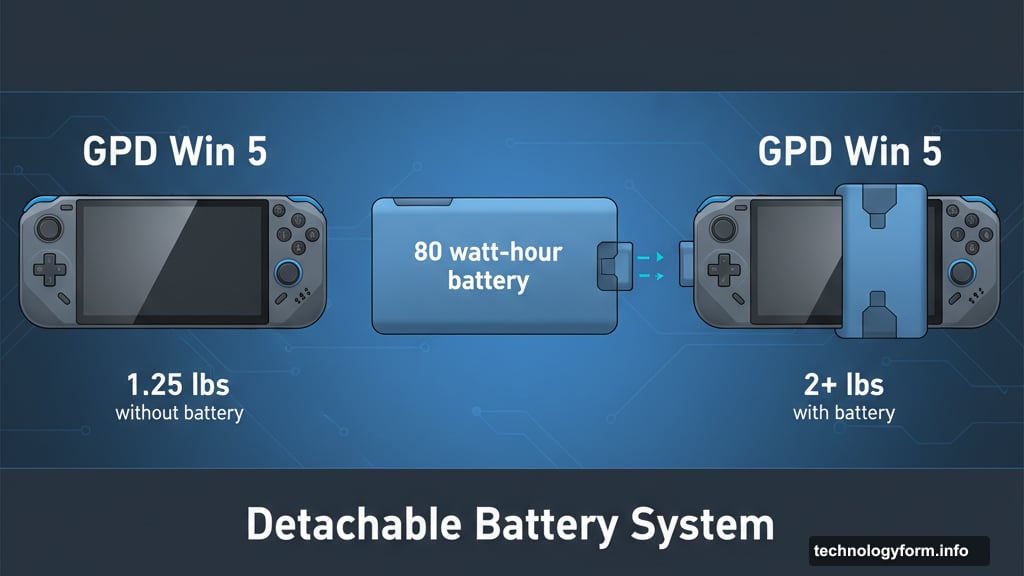
The Win 5 serves that niche better than anything else. It’s the only handheld that justifies a 1080p screen by actually playing modern games at that resolution. Every other portable forces you to drop settings or resolution to hit playable framerates.
And honestly? The 7-inch screen with 120Hz VRR looks gorgeous. The D-pad ranks among the best I’ve used. The transparent plastic and silver metal corners give it a premium PSP vibe.
GPD even included practical touches like a fingerprint reader, hardware mouse mode switch, full-size USB port, and that new M.2 2230 SSD slot.
The Verdict on Cord-First Gaming
Three years after the Steam Deck launched, handheld performance barely evolved. Companies threw faster chips into portables, but battery constraints killed the advantage. Nobody could play 2025 games at 1080p on the go.
GPD solved that by ripping out the battery and requiring external power. It’s radical. Most people will hate the concept. But for the right user, this approach unlocks performance handhelds couldn’t deliver before.
Is it worth $1,600? Probably not for most people. But as a concept? Cord-first handhelds might become a real category. Desktop performance in a portable form factor, with optional battery backup when you need it.
That’s a trade-off some gamers will gladly make.
